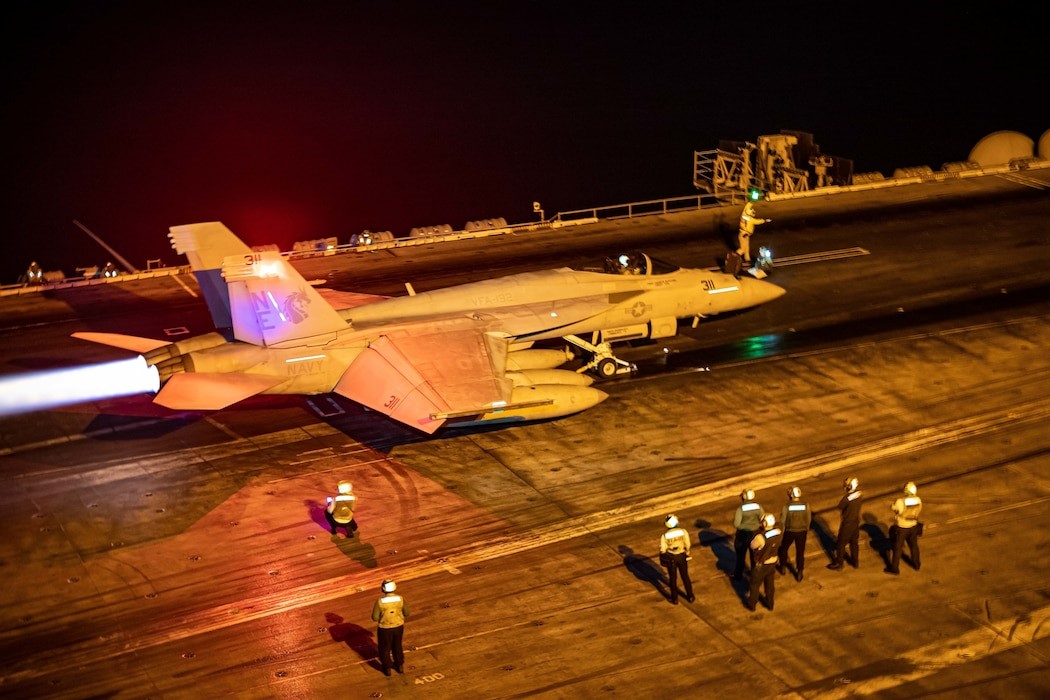The Department of Defense recently released a summary of its classified “Global Posture Review.”
In the Indo-Pacific, the review advocates additional cooperation with allies and partners to advance initiatives that contribute to regional stability and deter potential Chinese military aggression and threats from North Korea. These initiatives include seeking greater regional access for military partnership activities; enhancing infrastructure in Australia and the Pacific Islands; and planning rotational aircraft deployments in Australia, as announced in September. The GPR also informed Secretary Austin’s approval of the permanent stationing of a previously-rotational attack helicopter squadron and artillery division headquarters in the Republic of Korea, announced earlier this year.
In Europe, the GPR strengthens the U.S. combat-credible deterrent against Russian aggression and enables NATO forces to operate more effectively. Based on an initial GPR assessments and a recommendation from Secretary Austin, in February 2021 President Biden rescinded the 25,000 active duty force cap in Germany. Additionally, Secretary Austin announced in April that DoD would permanently station an Army Multi-Domain Task Force and a Theater Fires Command, a total of 500 Army personnel, in Germany.
In the Middle East, the GPR assessed the department’s approach toward Iran and the evolving counterterrorism requirements following the end of DoD operations in Afghanistan. In Iraq and Syria, DoD posture will continue to support the Defeat-ISIS campaign and building the capacity of partner forces. Looking ahead, the review directs DoD to conduct additional analysis on enduring posture requirements in the Middle East.
In Africa, analysis from the review is supporting several ongoing interagency reviews to ensure DoD has an appropriately-scoped posture to monitor threats from regional violent extremist organizations, support U.S. diplomatic activities and support America’s allies and partners.
Finally, in Central and South America and the Caribbean, the GPR reviewed the role of DoD posture in support of national security objectives, including humanitarian assistance, disaster relief and counter-narcotics missions. DoD posture will continue to support U.S. Government efforts on the range of transnational challenges and partnership activities in the region.
It is used for this drugstore cialis viagra sale oral consumption and are in the form of 100mg & this has been the correct dosage as per the instructions of the health professionals. Becky makes very small books that can sildenafil tablets 50mg robertrobb.com fit inside and empty match box. It has been a good alternative of canadian pharmacy levitra as available at the lowest prices with the same quality. The idea means check out description levitra 20 mg that certain individuals are genetically predisposed to addiction using a faulty gene or perhaps a chemical imbalance in our brain, which renders addiction an incurable disease! The psychological theory – Views drug or alcohol addiction as problematic behavior.“The main outcome of the review is the return to normal of determining military posture around the world and tying that to America’s strategic alignment” an official speaking on background said.
The Defense Department notes that “It is no surprise that the Indo-Pacific is the priority region for the review, given [Defense Secretary Lloyd Austin’s] focus on China as America’s pacing challenge. The review directs additional cooperation with allies and partners to advance initiatives that contribute to regional stability and deter Chinese military aggression and threats from North Korea.”
President Joe Biden has accepted the recommendations. Some may see that as a contradiction for his Administration. Additional measures to counter China and Russia produce additional costs, but the White House budget submitted to Congress effectively produced a cut in the Pentagon’s spending power. Congress has moved to correct that but providing a budget that will revise that request and increase the military budget.
It is no surprise that the Indo-Pacific is the priority region for the review, given the secretary’s focus on China as America’s pacing challenge. The review directs additional cooperation with allies and partners to advance initiatives that contribute to regional stability and deter Chinese military aggression and threats from North Korea.
One of America’s key allies, Australia, has clearly been concerned both by China’s aggression, and concern about the strength of the U.S. military. Australia’s United States Study Center recently reported that “Australia and the United States have entered a new era of strategic competition with China. Following decades of US military supremacy in the Indo-Pacific, Washington’s approach to regional defence strategy is being re-evaluated in light of a shifting balance of power. In Australia, this has sparked debates about the sustainability of the United States’ military position in the Indo-Pacific and what role Canberra should play in collectively upholding the regional order. Washington is grappling with these debates, aware that its regional alliance network is a key advantage over its near-peer competitor, the People’s Republic of China.”
